SendOwl vs. Podia (+ dealbreakers) – decide in 7 minutes

Thinking about starting an eCommerce store to sell digital products, but not sure whether you should pick SendOwl or Podia?
I get it—it’s not easy to figure out which one you should go for when both platforms have their pros and cons.
The truth is that both SendOwl and Podia are pretty similar (in a way), so we’re not going to waste your time by comparing every single feature. Instead, we’ll focus on the key differences and main dealbreakers to help you come to a final decision.
And, for the sake of comparison, we’ll also introduce you to another platform. Just to give you some perspective.
Are you ready? Let’s dive in.
Quick breakdown: SendOwl vs. Podia
While SendOwl and Podia are both platforms that let you sell online courses and digital products, there are some major differences between them.
The biggest difference is that, unlike Podia, SendOwl is a shopping cart solution that converts any existing site (e.g. a WordPress website) into an online store via buy buttons or shopping links.
With Podia, it isn’t as straightforward—it’s a hosted eCommerce solution, which means that creators can build and host an online store or landing page for selling digital products.
Moreover, Podia offers something that SendOwl doesn’t have: a chance to build a community.
Read on to learn more about the similarities and key differences between SendOwl and Podia: their dealbreakers, main features, etc.
To help you see how the two eCommerce solutions compare to each other as well as other alternatives, we’re also going to cover a third eCommerce platform—Sellfy.
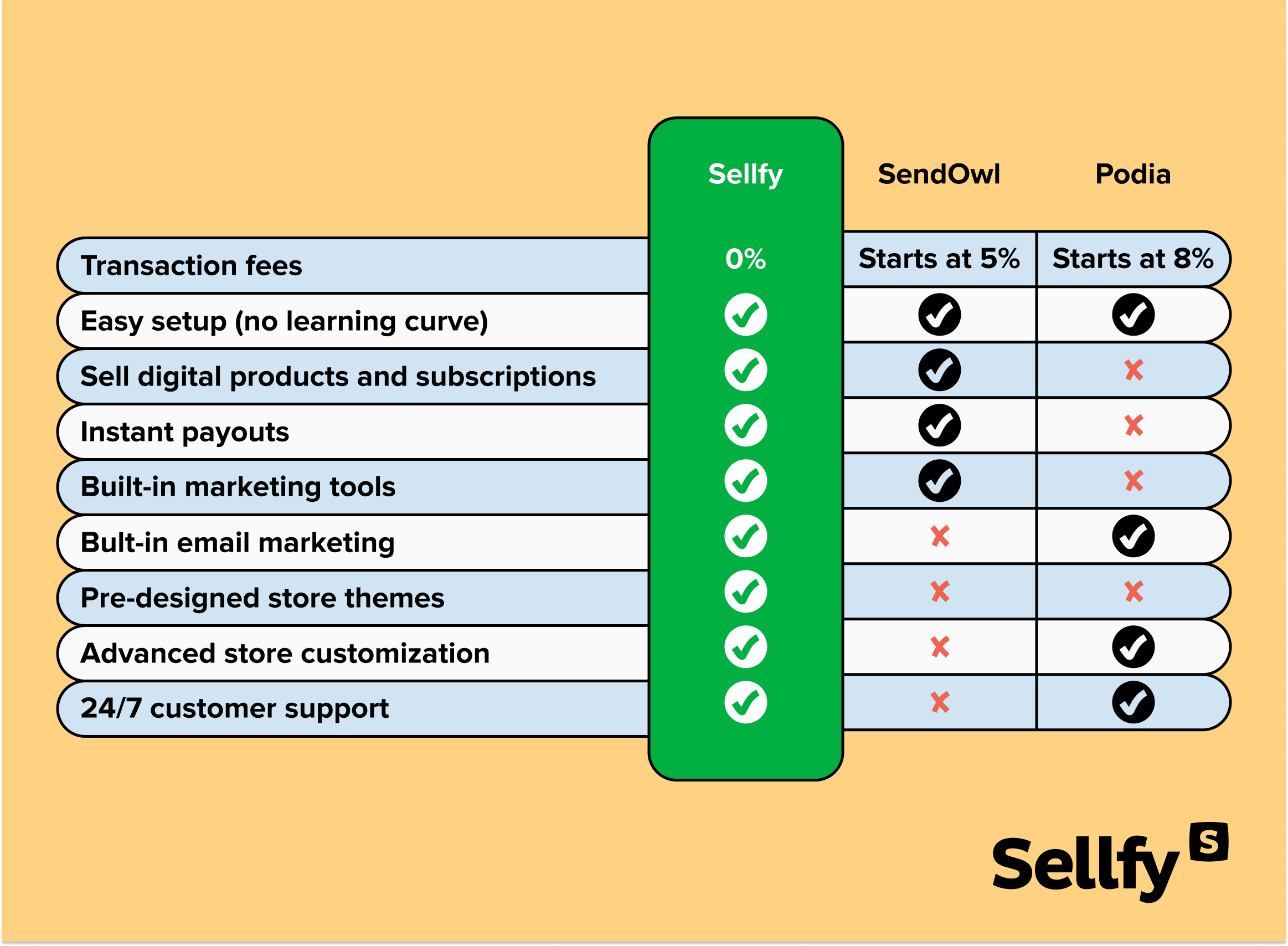
SendOwl & Podia are similar (in a way)
Both SendOwl and Podia allow you to easily create and sell digital products online, whether it’s on a hosted storefront (Podia), or via buy now buttons and shopping links (SendOwl) on your entire website.
Also, both offer a way for you to market your digital products with a few built-in features.
However, aside from the similarities and the fact that both platforms were built for the same purpose, there are some key differences worth considering before you make a final choice.
Why would you choose SendOwl over Podia
While we appreciate Podia’s community feature, there are some pretty good reasons for you to pick SendOwl over Podia. Let’s check them out.
1. SendOwl is a budget-friendly solution
Although Podia has a free subscription plan like SendOwl, the transaction fee is 3% higher. So, it clearly isn’t as budget-friendly as SendOwl.
SendOwl offers two different subscription plans that come with more or less the same features:
- Free ($0/month)—5% of sales, sell subscriptions, unlimited usage, standard templates, and marketing tools.
- Growth ($19/month)—1% subscription fee, 0% of sales, sell subscriptions, standard usage, customization, and marketing tools.
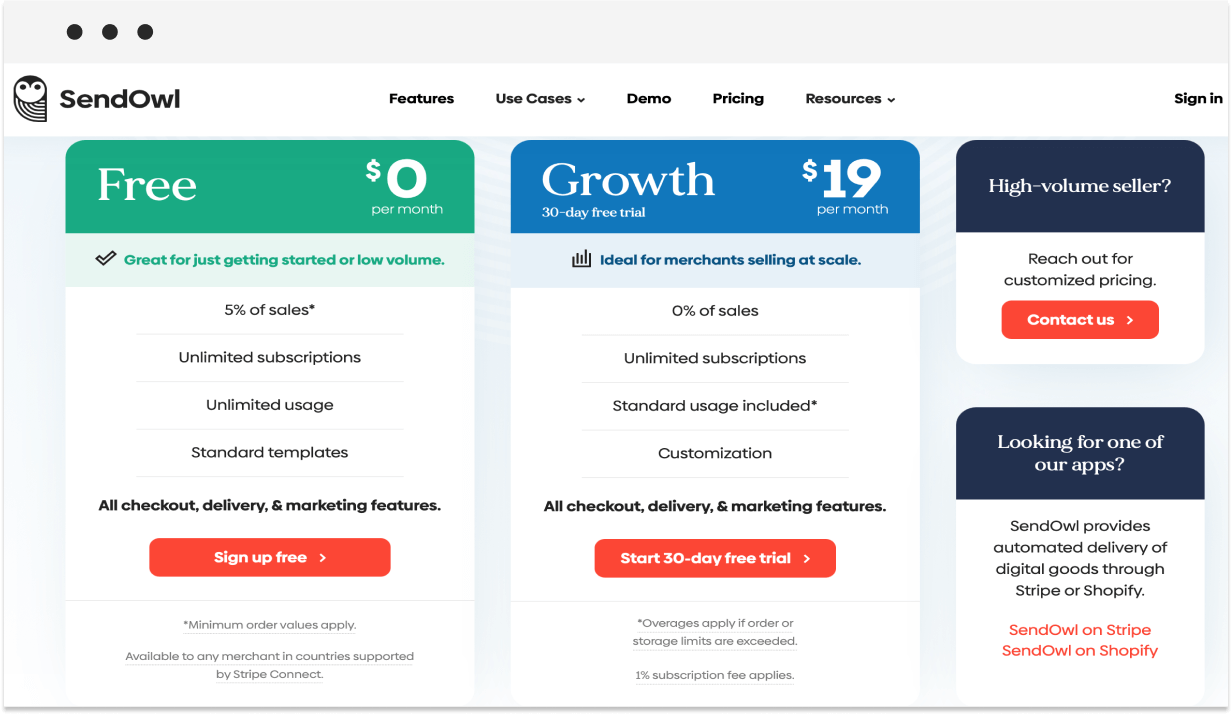
2. You can sell digital downloads
Unlike Podia, SendOwl lets you sell digital downloads and subscriptions on any pricing plan (free or paid).
While you can’t build a website or hosted eCommerce store with SendOwl, you can use it as an embed tool on an existing domain or simply share shopping links on social.
In other words, SendOwl acts as a connecting point between you and your customer—it’s a simple solution that gets the job done without any hassle.
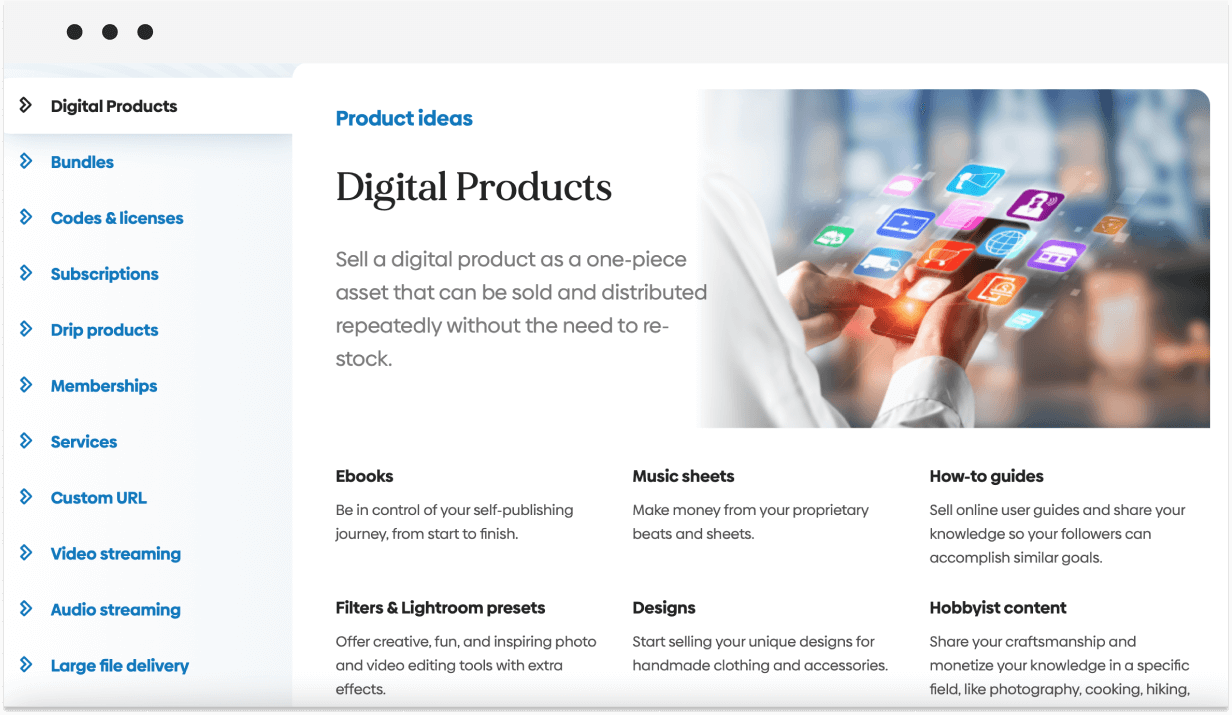
3. SendOwl is very easy to set up & use
Another reason why you might want to consider SendOwl over Podia is that it’s a much easier solution for people that are new to eCommerce and simply want to sell digital goods.
There is no deep learning curve, and you don’t need any design or technical skills.
And, since there’s no complex online store building or customization (except for a few templates for checkout pages), the setup steps are relatively quick and straightforward.
However, this type of simplicity may feel limiting after a while.
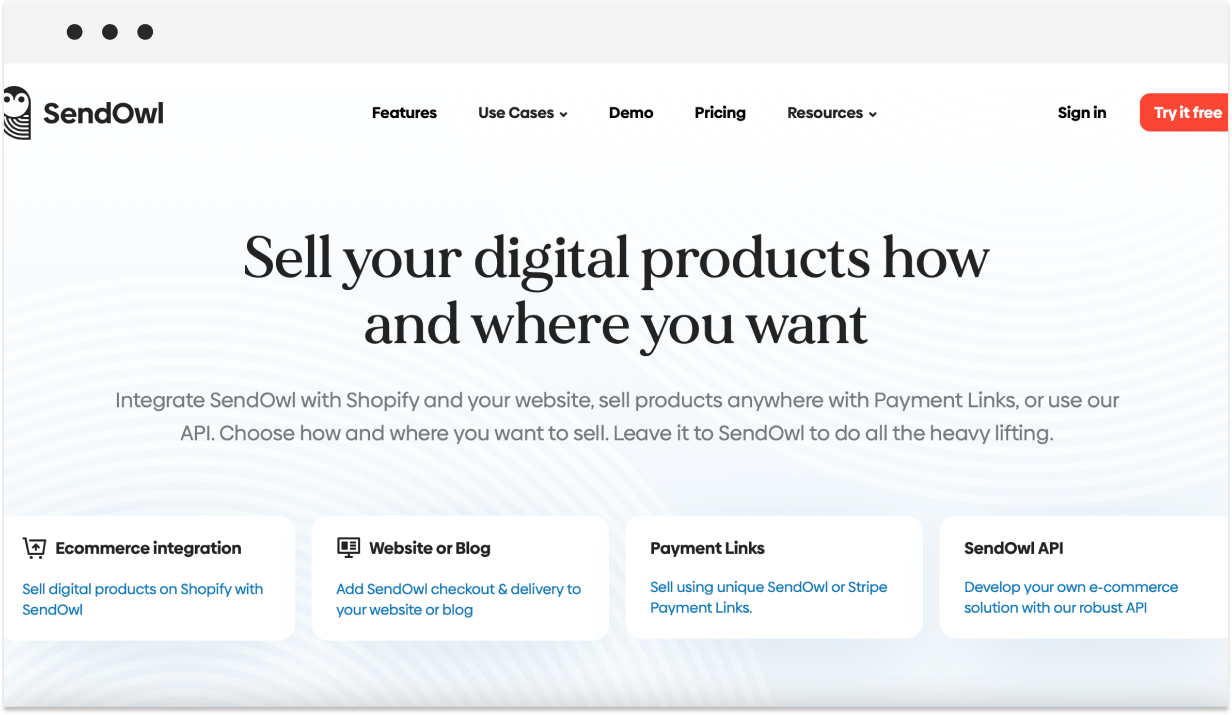
The main disadvantages of SendOwl
Aside from the positives, there are also a couple of dealbreakers that you need to be aware of.
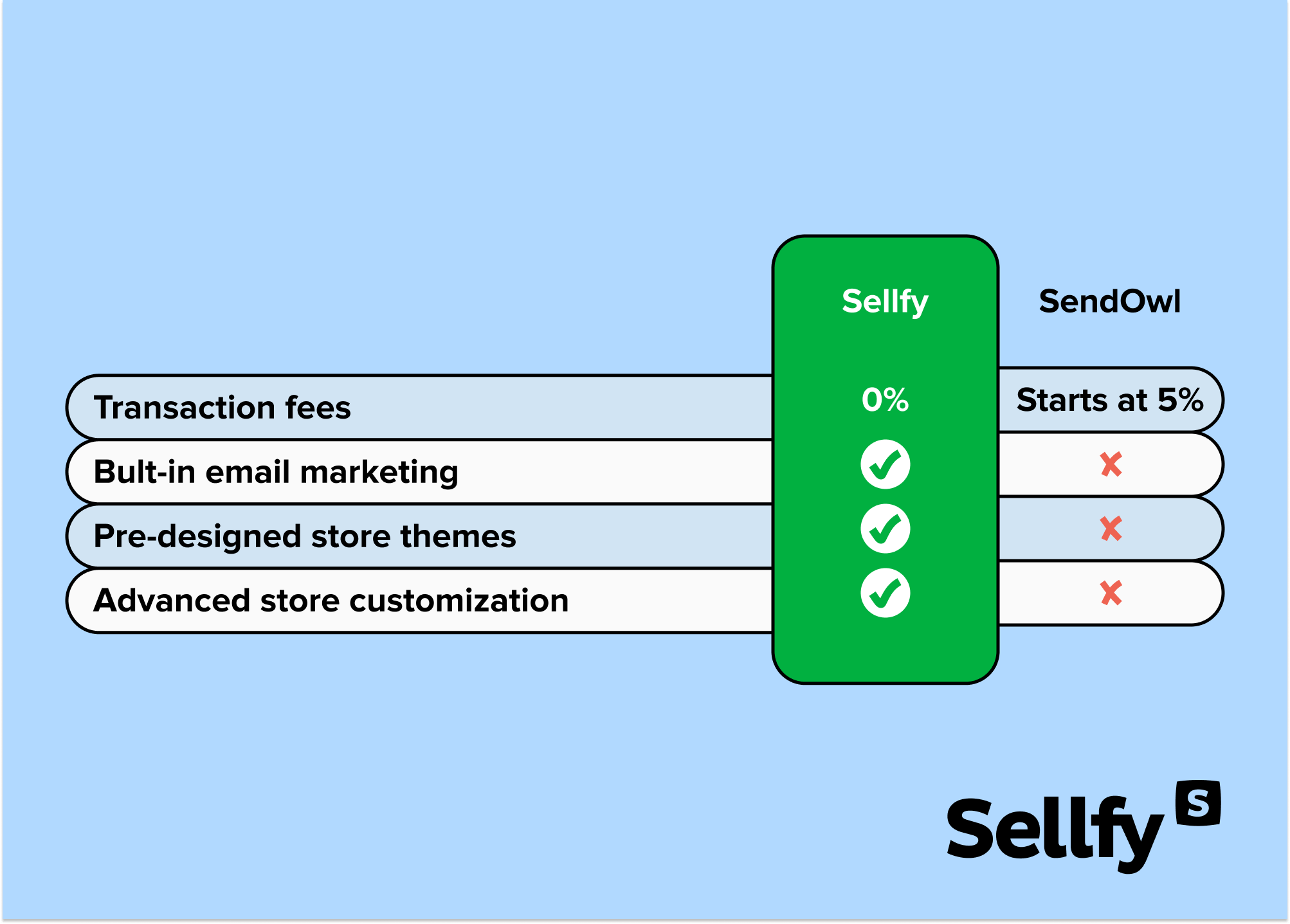
Let’s talk about some of them in more detail.
1. You must have an existing website to sell digital products
If you already have your own website or landing page, then you can use SendOwl without any problems. But, if you don’t, then it’s obviously going to be an issue.
To use SendOwl, you will need to have an online presence, whether that’s a large social media following or your own domain.
This is why SendOwl isn’t suitable for beginners, despite its ease of use and budget-friendly pricing.
And, this is also why SendOwl is more popular among established creators and online business owners who already have an online presence.
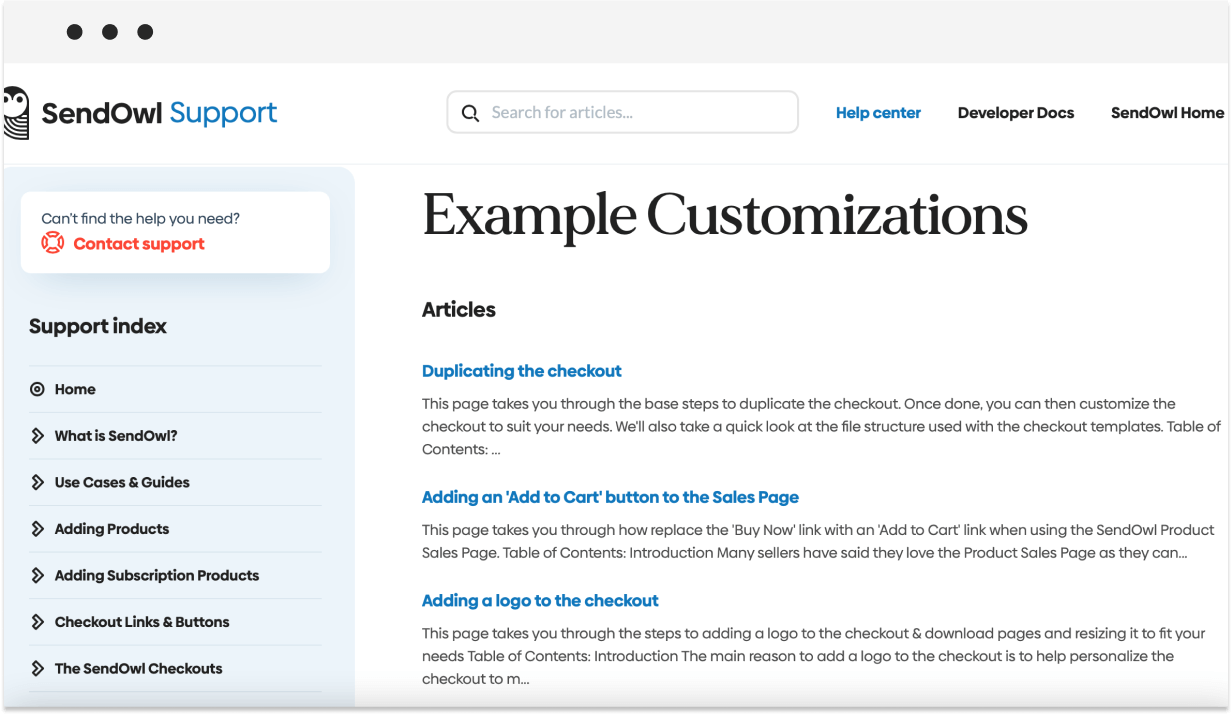
2. You cannot get emergency customer support
If you have a problem that needs to be resolved quickly, then you’re going to be out of luck because SendOwl doesn’t have live customer support.
So, it’s going to be a real struggle when you experience some technical issues or receive a customer complaint.
The only help that SendOwl offers is a Help Center where you can read up on the FAQs about the most common issues. And, yes, you can contact support, too. But, according to user reviews, communication with them tends to be rather slow.
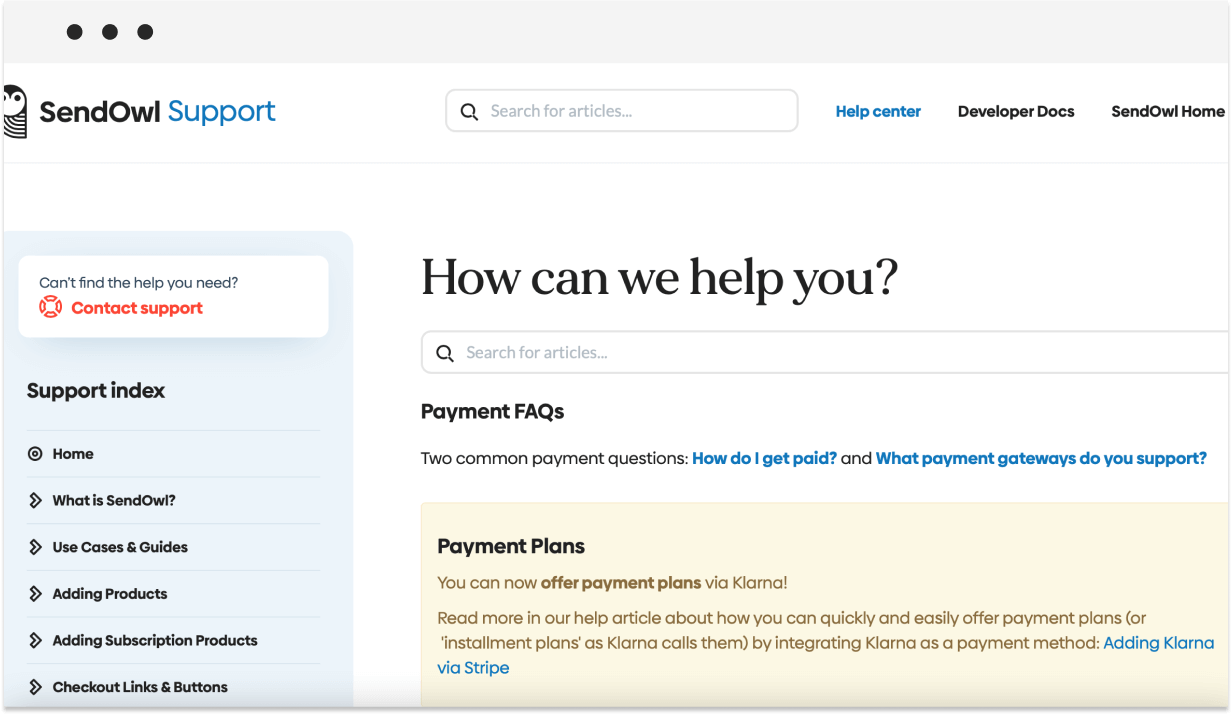
3. You’ll have to pay for email marketing software
SendOwl doesn’t have built-in email marketing, which can be a major dealbreaker for a creator who wants to use email as a marketing channel.
Even though SendOwl lets you use third-party apps and software like MailChimp, ConvertKit, and other integrations to manage mailing lists, it doesn’t change the fact that you’ll have to pay for them.
So, if you’re on a tight budget, this may not be the right solution for you.
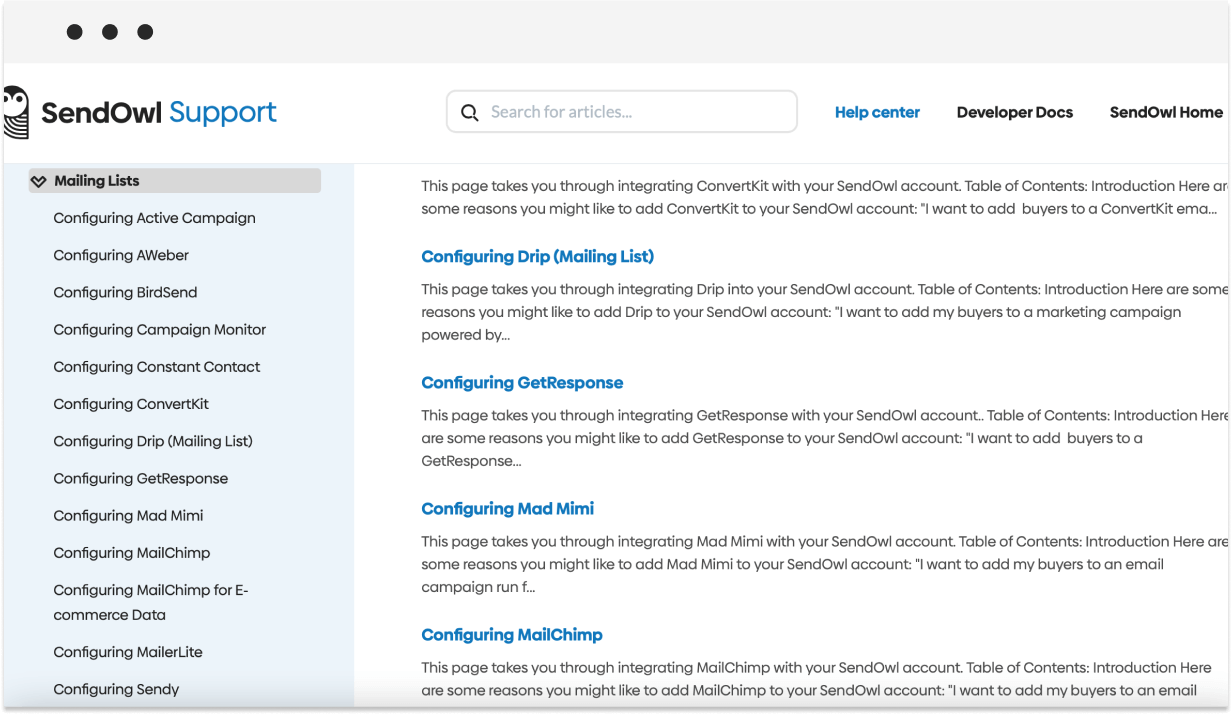
4. SendOwl takes a 5% cut of your sales
Although SendOwl has a free plan, it doesn’t mean that it’s 100% free:
SendOwl takes a 5% cut of your sales when you start selling digital products, which is even more expensive than payment gateway fees.
For example, the PayPal Checkout rate for receiving domestic transactions is 3.49% + 0.49 USD—much lower than SendOwl’s fee.
This means that you’ll lose quite a significant amount of your hard-earned money.
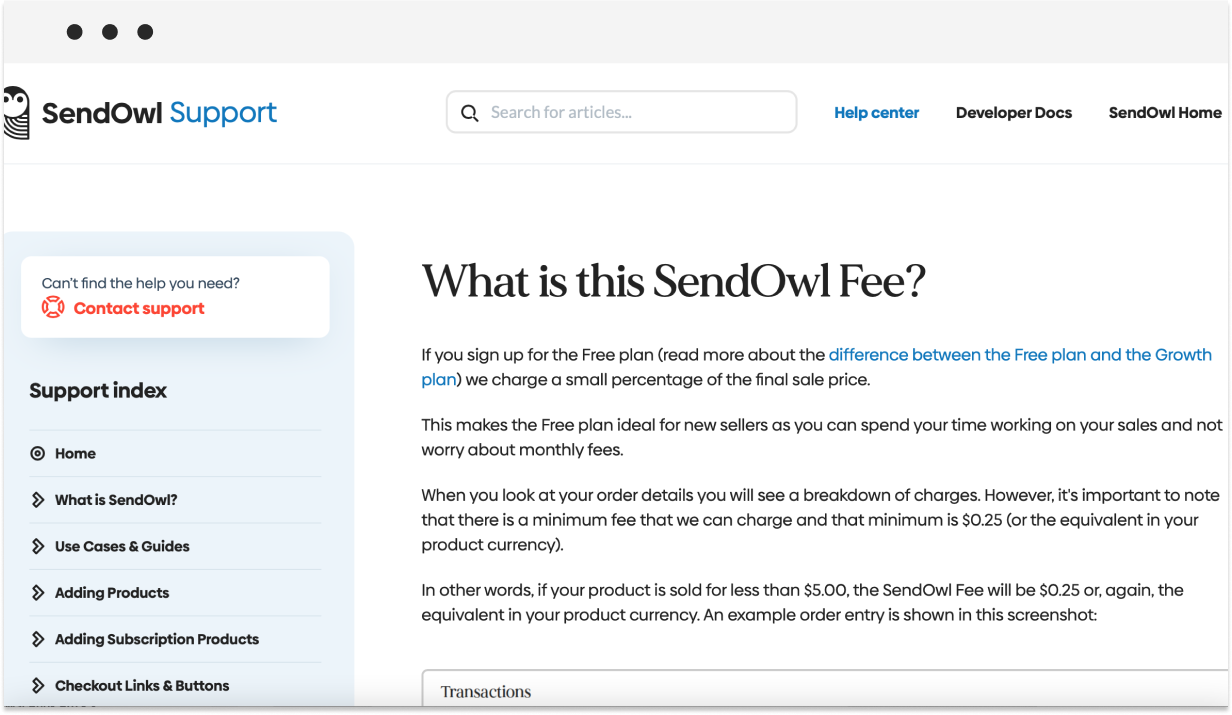
Why would you choose Podia over SendOwl?
Podia is far from being the only SendOwl alternative, but it’s definitely an option worth considering. Let’s explore why.
1. Podia comes with an intuitive website builder
This is where Podia has the upper hand over SendOwl—the platform lets you create and customize your online store with an intuitive website builder.
This website builder is a drag-and-drop tool that doesn’t require any coding or design skills: you can change buttons, add a section or a whole new page, change color schemes and fonts, upload a logo, use stock photo integration, etc.

2. Podia gives you an email marketing platform
Unlike SendOwl, Podia offers a built-in email marketing tool that lets you create an email list without having to pay for external services.
For example, you can:
- Send broadcast emails
- Build automated funnels & campaigns
- Get email analytics & revenue metrics
- Add email signup forms
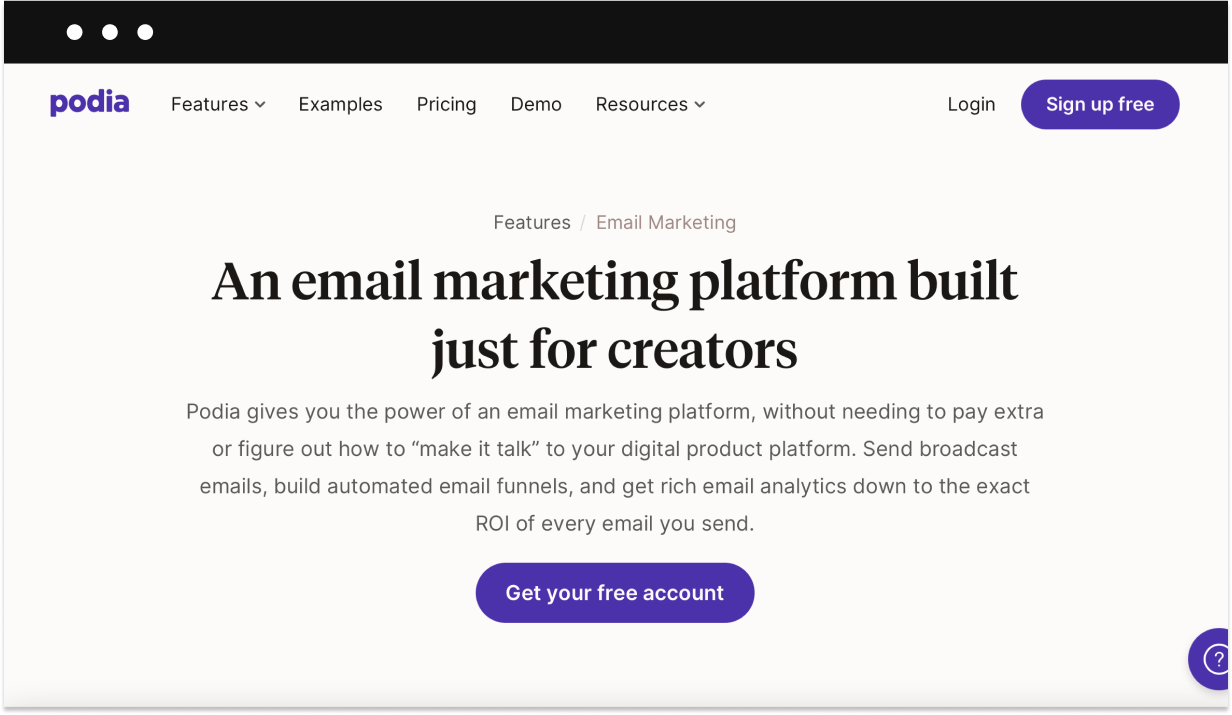
3. You can build a community with Podia
In addition to email marketing, you can build a community for your audience.
This unique feature resembles an online forum or a message board where you can create private feeds and topics for members to discuss, give special access to digital products, share multimedia, etc.
You can either make it accessible and free for all, or a paid membership where you can give rewards to members who want to support your work.
This is a good option for someone that wants to host a Patreon-style community on their own platform.
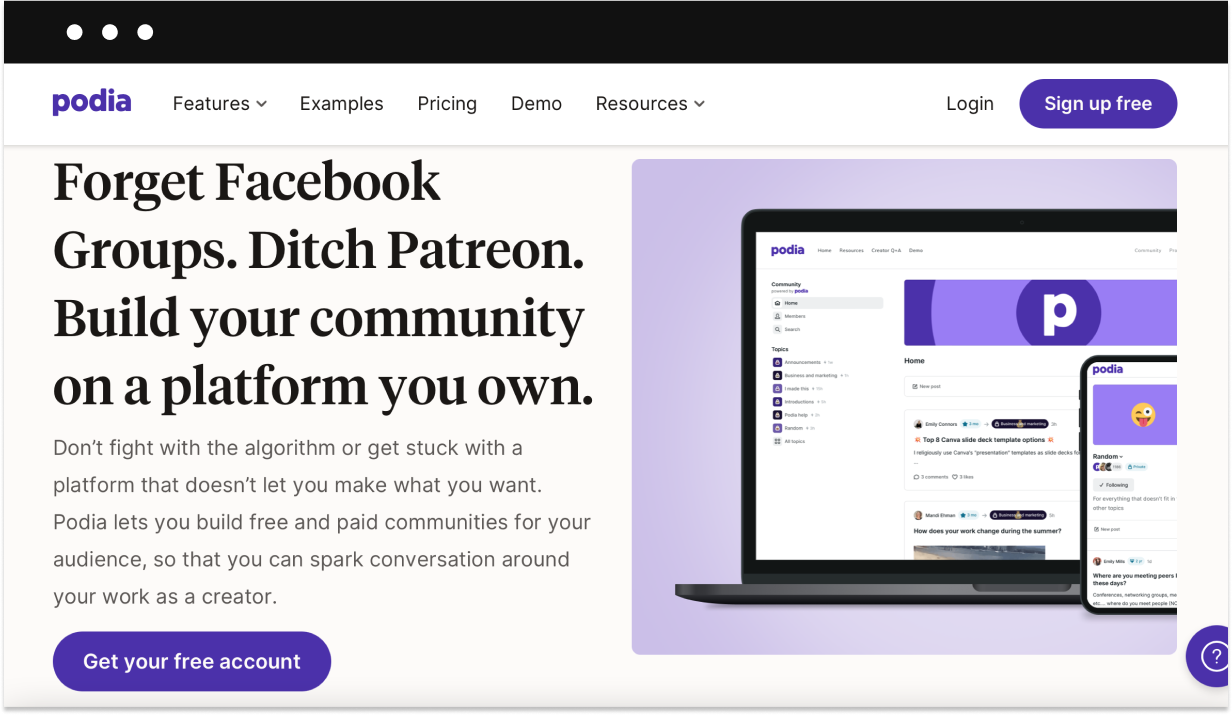
The main disadvantages of Podia
Podia may look like a slightly better alternative to SendOwl, but it’s far from being the best eCommerce solution available.
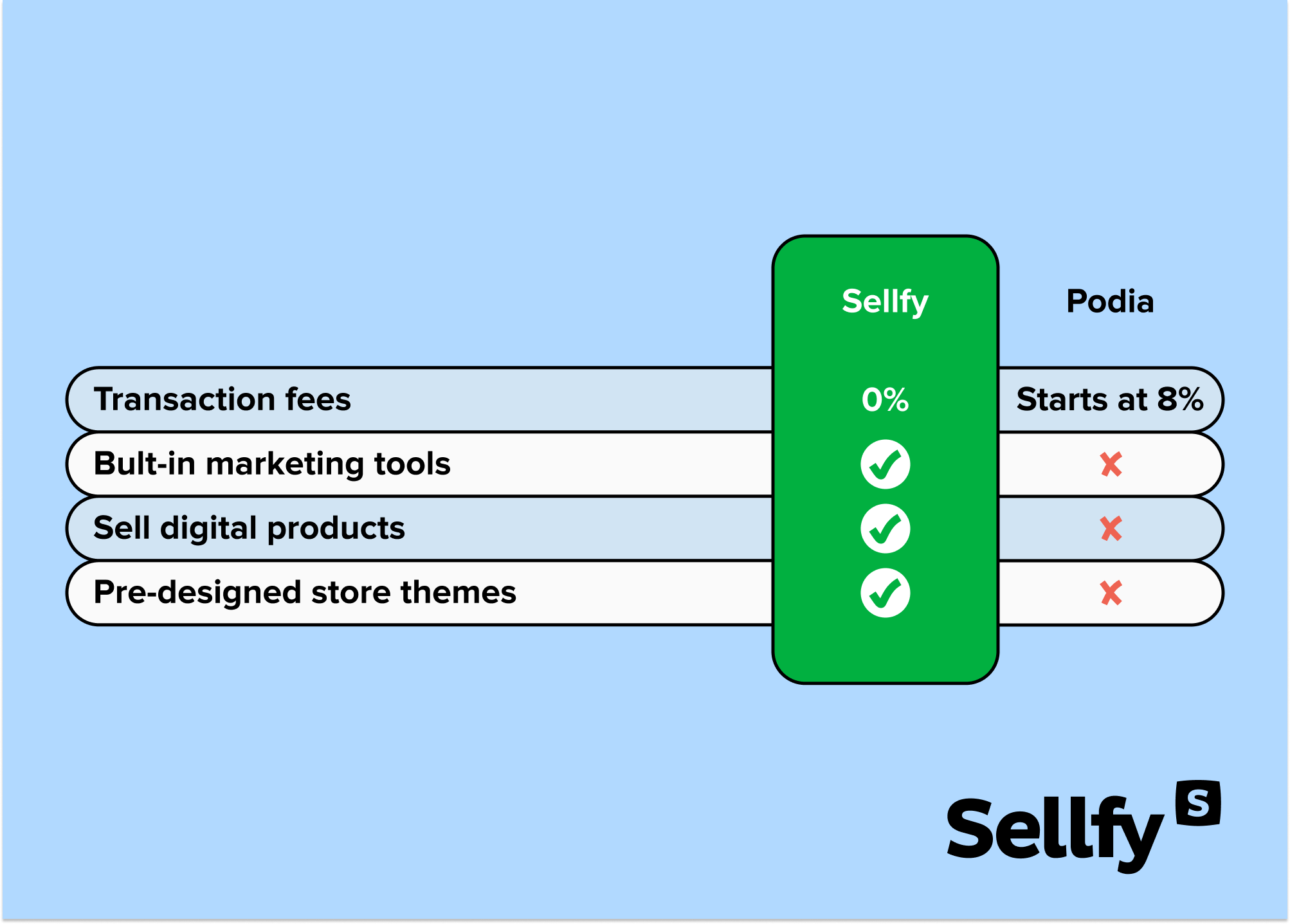
So, let’s get into the dealbreakers.
1. There are no pre-designed store themes
Yes, you can use Podia’s website builder to create an eCommerce store. But, that’s as far as the customization goes.
There are no pre-designed store themes to pick from, which means that you’ll have to create a design from scratch.
And, I don’t know about you, but I’d rather have a good base to build on or modify than a blank canvas that requires hours of dragging and dropping different elements.
Designing from scratch may sound like a lot of fun, but it gets old pretty fast when you’re done playing around with customization, and you just want a professional-looking store theme.
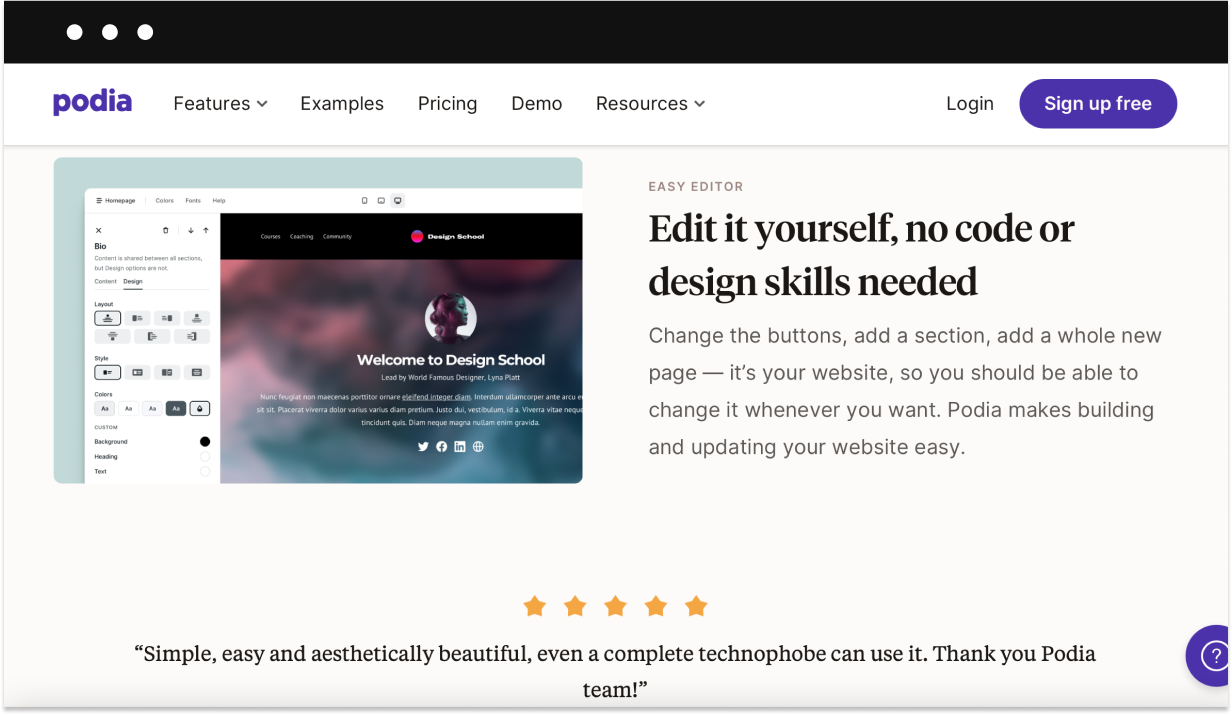
2. PayPal is only available on Podia’s paid plans
Another downside is that it isn’t possible to use PayPal on the free plan (it’s only available on Podia’s paid plans). This is obviously bad news if you or your customers prefer PayPal as a payment processor.
The only payment method available on the free plan is a Stripe integration, which means that you won’t be able to accept anything else but credit or debit card payments.
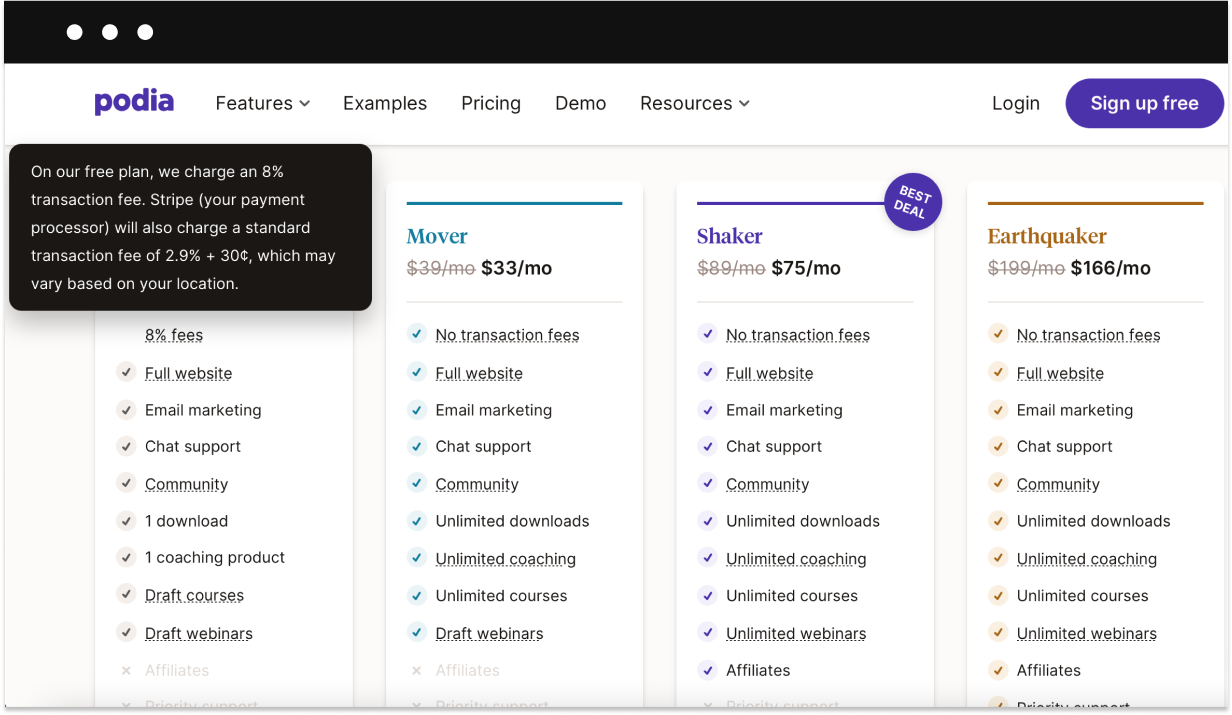
3. Podia’s free plan comes with too many limitations & fees
Honestly, there isn’t really anything “free” about the free plan.
While you can build a hosted storefront, it comes with a Podia subdomain. So, if you want a white-label store, then you will have to upgrade to the Mover plan, which costs $39/month.
That’s pretty expensive for a basic plan that only lets you sell digital products.
And, if you don’t upgrade, then you’ll be stuck with an 8% transaction fee (for every sale you make) forever. Plus, Stripe will also charge a transaction fee of 2.9% + 30¢ depending on your location.
And, not only that, but you won’t be able to sell more than one download or coaching product. So, if you want to sell more, you must upgrade.
The only bonus that Podia’s free plan offers is the community feature. But, if that’s what you really need, you might as well use Patreon.
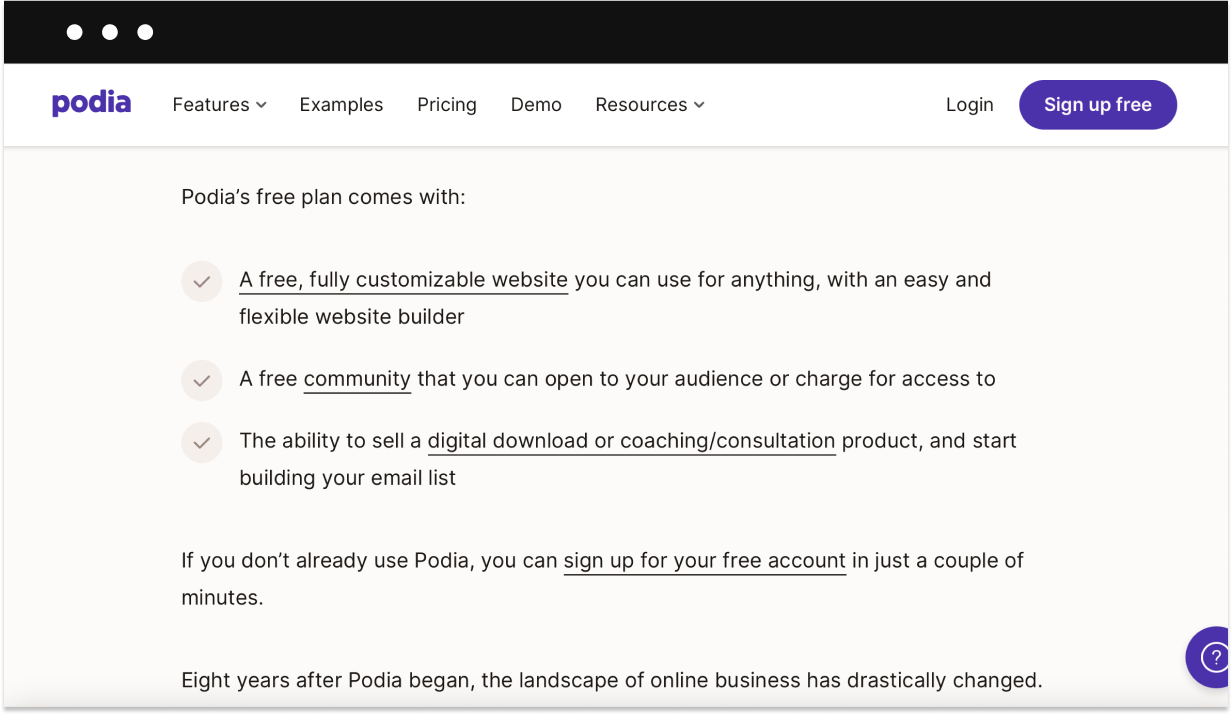
4. You can’t sell online courses & webinars unless you upgrade
If you’re a creator who wants to sell online courses and webinars, then it’s probably best to forget about Podia’s free plan and upgrade, or find a more affordable eCommerce platform.
As previously mentioned, the only thing you’ll be able to sell on the free plan is one download or coaching product.
And, even though the free plan mentions that you can “draft webinars and courses”, what it truly means is that you can only build an online course or a webinar, but you cannot sell it unless you upgrade.
What’s more, the Mover plan ($39/month) only lets you sell online courses, not webinars. So, if you want to sell webinars, then you must upgrade to the Shaker plan, which is even more expensive than Mover—$89/month!
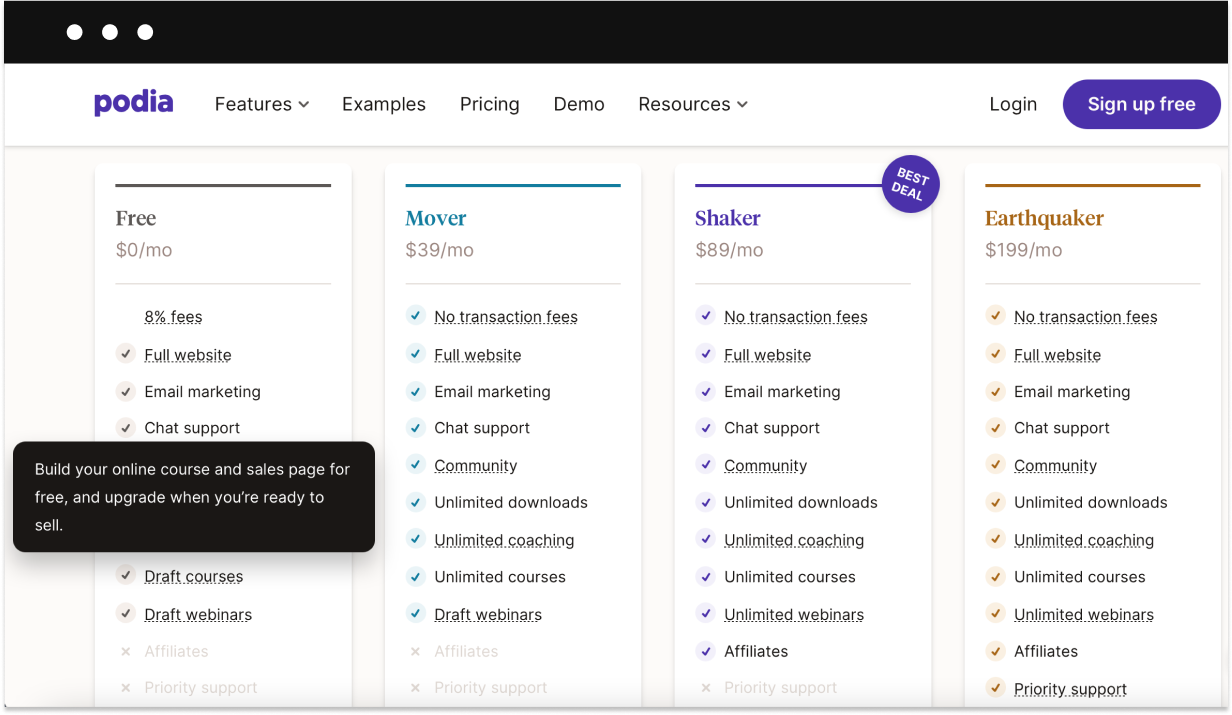
The question isn’t SendOwl vs. Podia—it’s why not Sellfy?
By now, you should have a clear understanding of what both platforms offer.
If you’re looking for a hosted storefront with a community feature, then Podia may be worth a try. However, if you’re looking for a simple solution that converts any website into a store, then SendOwl could be the better option.
In any case, both platforms come with some serious dealbreakers, which is why I’d like to introduce you to an all-in-one solution like Sellfy.
1. Setting up a Sellfy store is as easy as it gets
Although SendOwl and Podia are both pretty easy to set up, nothing beats Sellfy. Setting up a Sellfy store is literally a piece of cake thanks to the user-friendly interface.
To start selling digital and physical products, all you have to do is upload your products, set prices, and add your images and descriptions. That’s it!
Sellfy creator and award-winning underwater photographer Tobias Friedrich agrees:
It’s super easy to set up and it’s also very easy to upload digital products. I like how convenient the whole platform is—my customers will just get a download link after a purchase is made. I don’t have to do anything manually. Everything is automated, which is great for me because I travel a lot.
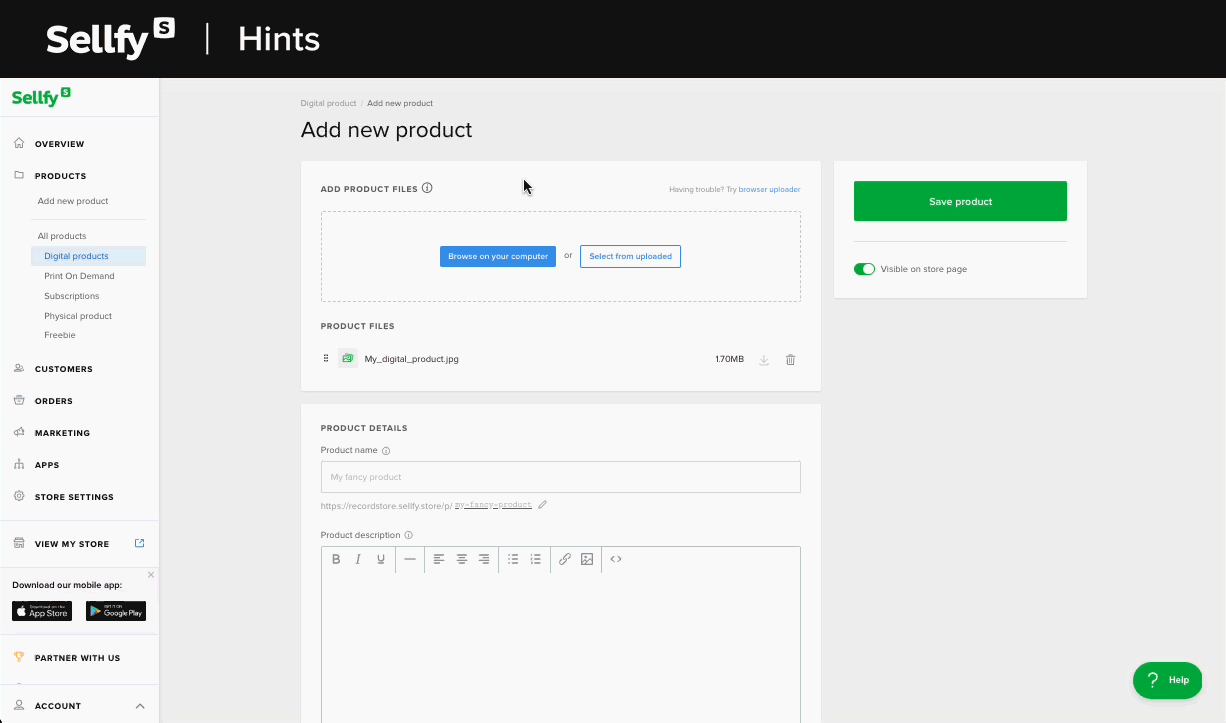
2. Sellfy comes with powerful features & built-in marketing tools
Both SendOwl and Podia offer the absolute bare minimum when it comes to built-in marketing features.
Aside from built-in email marketing, most of their features are just external apps or services that you have to pay for.
Sellfy has everything you need to grow your business such as email marketing, discounts, discount codes, upselling, cart abandonment, pay-what-you-want pricing, store and Google analytics, multiple payment gateways, and other advanced features.
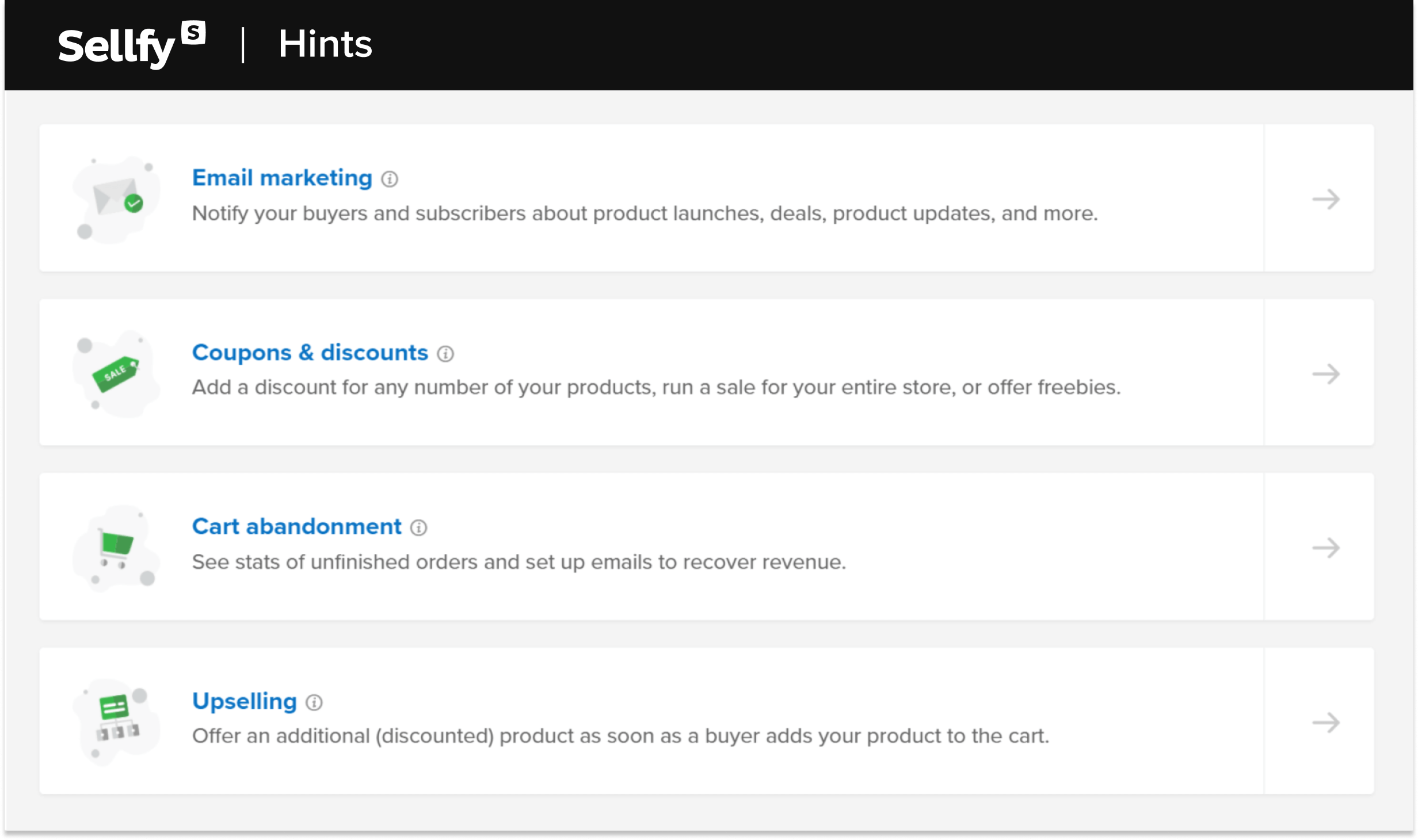
3. You never have to worry about hidden transaction fees
No transaction fees whatsoever! Sellfy’s pricing is flat and transparent.
This means that you can focus on selling without worrying about anything eating your profits. Your only expense will be the cost of your monthly (or yearly) subscription plan.
With Sellfy, you can sell unlimited digital products, use built-in marketing features, enjoy store customization, and even use print-on-demand without hidden transaction fees on any of the plans.
Plus, you get instant access to payouts!
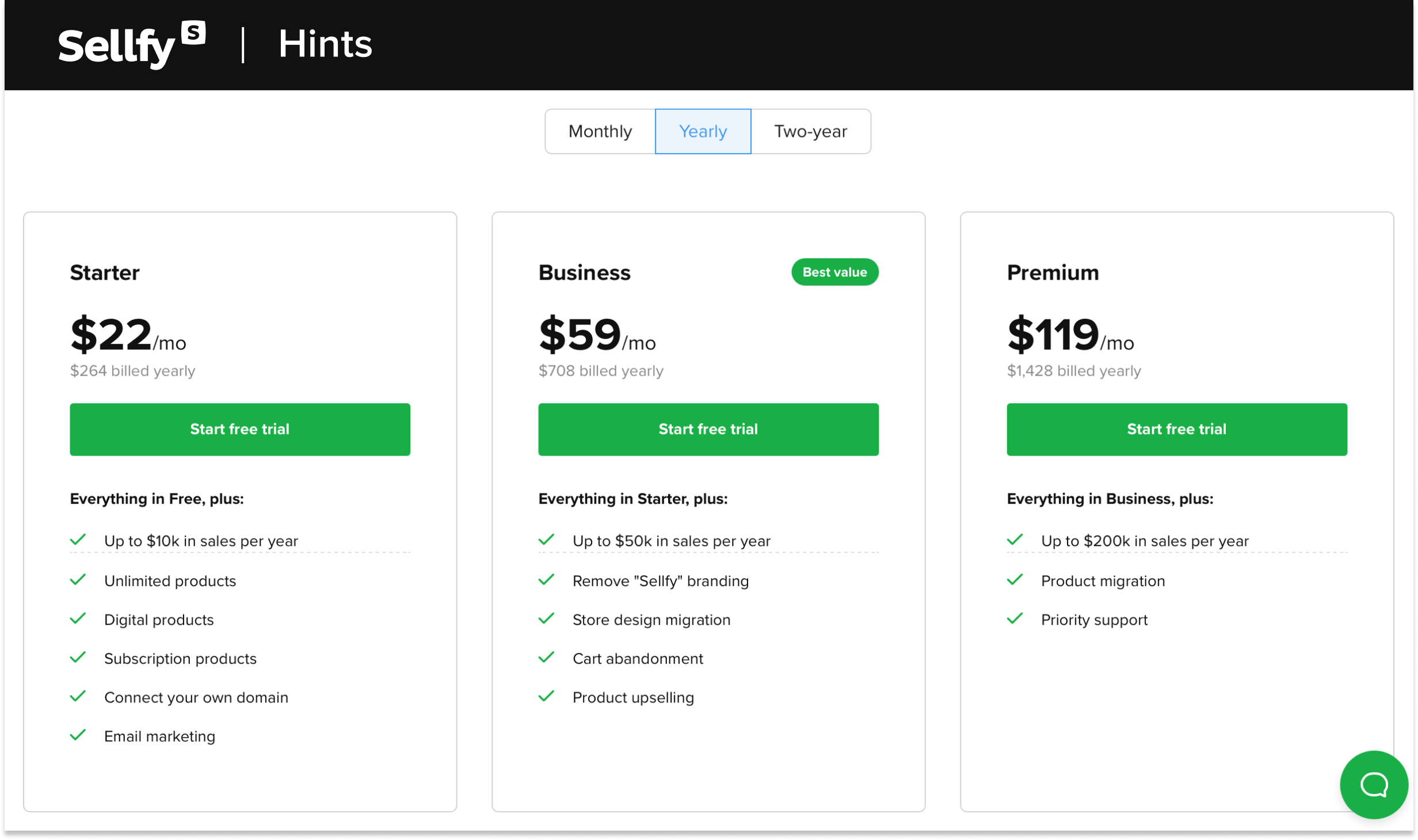
4. You can always reach out to Sellfy’s customer support
Sellfy’s customer support team is available 24/7. And, not only is the team available at any time, but they’re also incredibly helpful.
Sellfy creator and photographer Megan Hein agrees:
I was also blown away at how quick your customer support was to respond. I thought it would take a week or two before I heard back from them, but that immediate response kept my business up and running.
So, if you ever run into a problem, you know that you can reach out to Sellfy’s support team!
5. You’ll have a mobile-first store design from the get-go
Unlike SendOwl and Podia, Sellfy comes with advanced store customization. It’s not just drag-and-drop store building, it’s more than that—you get an excellent selection of professional-looking store themes!
And, every single one of those themes is customizable, so you’ll have complete control over your online storefront. Plus, every theme has a mobile-first design, which means that your store will look great on both desktop and mobile. Win-win!
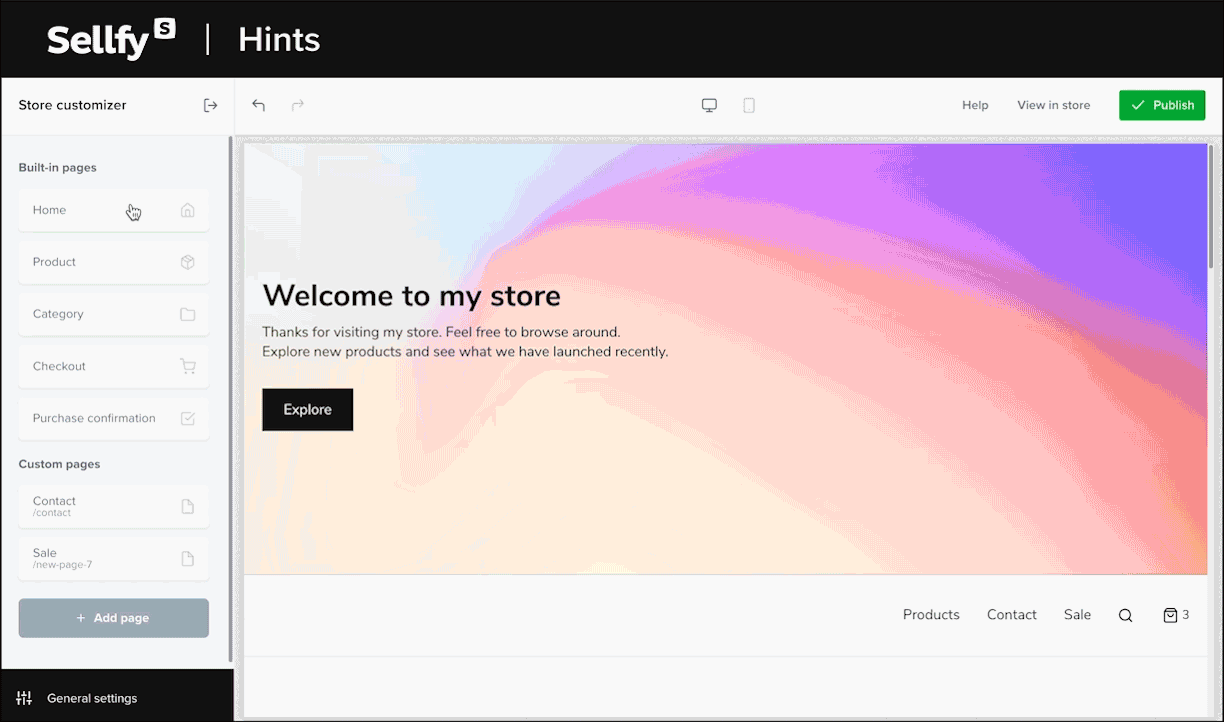
Make sure to check out more Sendowl vs Podia comparison articles:




